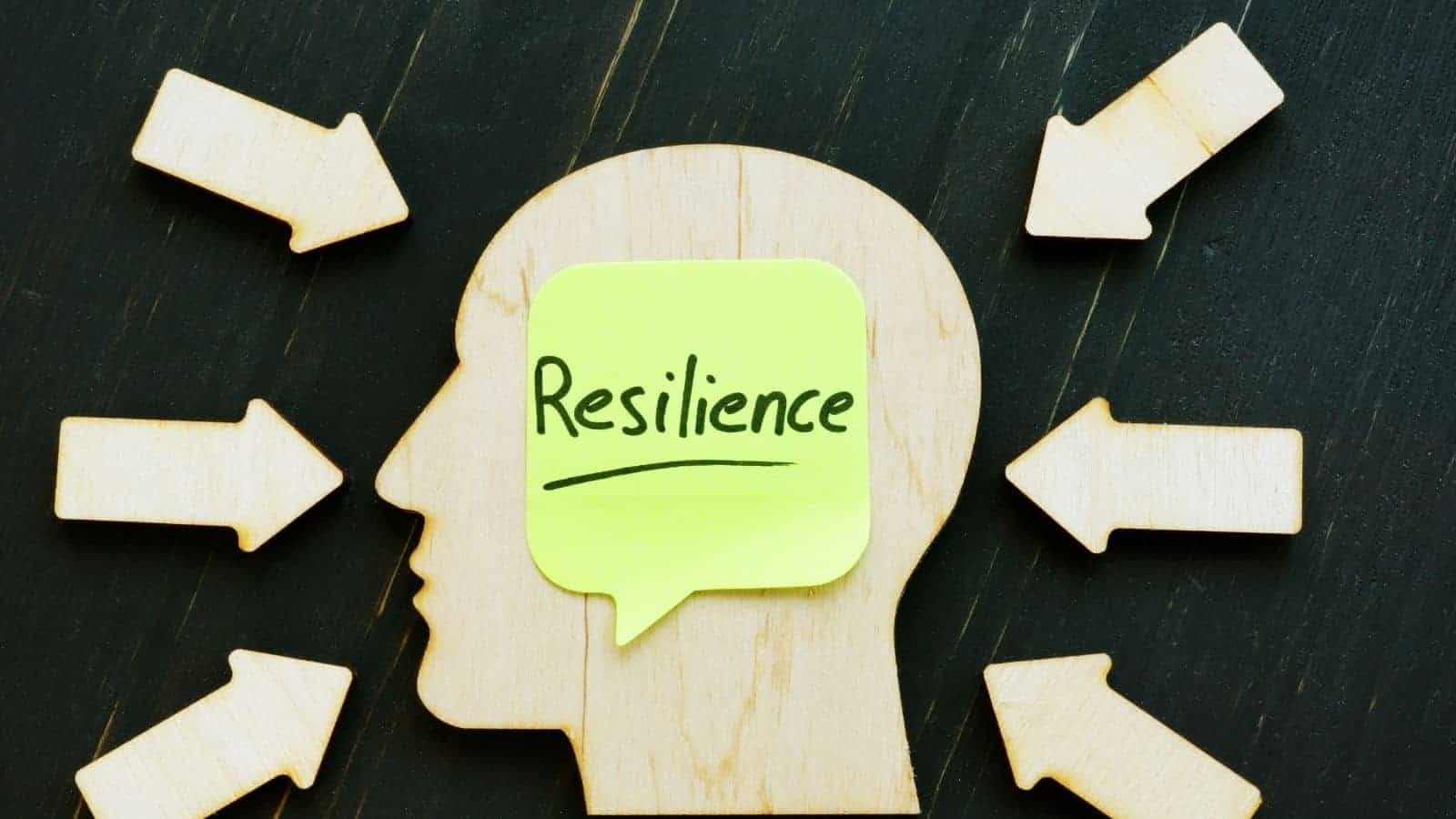With all of the difficulties that life can bring, one must learn to be strong. But strength doesn’t come naturally to most people. It’s something that must be worked on and built over time. Still, learning to build up that mental strength is no simple feat. It can feel like an uphill battle to improving that fortitude. To help you out, here are 6 easy ways to increase your resilience.
1. Get Some Emotional Space
When you’re close to a situation, it can be difficult to gain insight from it in a wholly rational manner. By nature, you can’t be unbiased towards your own situation, after all! As such, what you need to do is try to separate yourself from things that test you.
This doesn’t mean to avoid hardship, of course. Instead, when confronted with hardship, it means to step back from it and put yourself in the position of an observer. If you were on the outside looking in, how would this look to you? Studies have shown that distancing yourself emotionally from a situation makes things less intense, allowing for more positive methods of self-reflection.
You can apply a similar concept to memories that haunt you. When these memories crop up, watch them as if you are watching a movie. Separate yourself from the person in your memories. It’s not even a stretch to do, since you have likely learned, grown, and changed since that moment in time.
When performing this exercise of self-separation, you can help the process by asking yourself questions such as:
- Would an outsider looking in be able to see why this situation is negative for you?
- Would an outsider looking in be able to see the points of view of the others involved in this scenario?
- Could an outsider interpret a situation differently to you, or even be on your side at all?
- What would an outsider’s fair evaluation of what they witness be?
2. Break The Catastrophizing Cycle
Catastrophizing refers to the act of imagining all the worst-case scenarios instead of the more reasonable ones. For example:
- When you hear about a storm hitting your city, you immediately fear that your home will be destroyed.
- If you feel ill, you worry about having a life-threatening disease.
- When you lose a job or fail a pitch meeting, you feel your career is permanently over.
- If your partner breaks up with you, you think you’ll never find love and that you’ll die alone.
- When an electrical appliance breaks down, you worry that it’s going to explode.
Those examples may have been somewhat extreme, but catastrophizing can also involve more minor negative thoughts. Regardless of the severity, this kind of thinking is linked to decreased positive thinking and symptoms of depression, especially in individuals who are already in somewhat difficult circumstances.
It is somewhat important to be aware of multiple possibilities, including the bad ones, so that you can prepare for different outcomes. You certainly shouldn’t only ever expert the best, as that means you won’t be ready for the many times when the best outcome isn’t the one you’ll get.
But going too extreme into the negative territory is unrealistic and unnecessary, and you can’t be resilient while you’re fretting over those thoughts. Learning to control that negativity is incredibly powerful!
3. Learn To Forgive
Over the course of your life, many people will do you wrong. If you spend your time hating everyone who does something bad to you, you’re going to wind up being held back. In many cases, the act of bearing grudges and refusing to forgive can harm your mental and physical health, according to research.
Learning to forgive can be a complicated process, but it’s compelling to take control of your emotions and life in this way. Here are steps you will take in your journey towards forgiving others.
· Step 1
Acknowledge what happened and the pain that it caused, and recognize how it continues to affect your life till this day.
· Step 2
Commit to forgiveness. Forgiving someone is not something you can be wishy-washy over. You must decide to release ill will and resentment at the moment and commit to that.
· Step 3
Understand what forgiveness requires. You don’t need to let someone get away with their wrongs, speak to them, or make nice with them to forgive, so if that isn’t necessary, focus on forgiveness from a distance.
· Step 4
Find the opportunity for growth. This past pain has changed you. How has it made you better? How can it keep making you better?
Of course, forgiveness isn’t necessary for all circumstances. You may fully forgive a small number of people who have harmed you in excruciating and significant ways, and that’s okay. The recovery process from trauma and pain in those extreme situations can sometimes benefit from relieving yourself of the need to forgive.
But learning where a lack of forgiveness is holding you back is important. In almost all cases, forgiveness is going to have a more positive outcome for you. Learn to let go of grudges and move on with your life. You deserve better than to be held back by the pain of your past.
4. Have Lots Of Positive Thinking
Positive emotions and thoughts are crucial in becoming a resilient person. Life will throw all sorts of curveballs at you, and if you’re in short supply of anything happy or positive, you could wind up in trouble as you struggle to stay afloat.
This is based on a psychological concept called the broaden-and-build theory. This theory refers to positive emotions as adaptations that evolve over time to serve as mental and even physical resources for the body. The goal in life, then, is to gain more and more positivity to get rid of old negativity and become stronger through those endeavors.
There are other benefits to learning to increase your bandwidth of positivity, though. Longevity, good physical health, and more fulfilling life outcomes are associated with a higher level of positive emotions. This means that these good thoughts don’t just help you get stronger. They also help your entire life improve!
Sure, it’s difficult to stay positive in bad or disappointing times. But that’s a skill that you can sharpen and improve over time, so get started right away!
5. Practice Mindfulness to Increase Resilience
Mindfulness has become increasingly popular in the world of mental health over the last several years. Whether done in the form of meditation, in conjunction with a form of exercise, or brief few-minute bursts throughout the day, there’s no denying how commonly it’s spoken about and performed.
The reason mindfulness is such a hot topic is that it works. It is the act of focusing on the present and living in the moment, becoming aware of yourself, and simply existing. When mastered, it’s a potent tool for positive thinking, mental strength, and overall happiness. Don’t believe how effective it is?
Here are some studies that prove it!
- “Mindfulness-based stress reduction and health benefits. A meta-analysis” in Journal of Psychosomatic Research (2004). This research paper roundly showed the positive benefits gained from mindfulness treatment across multiple groups of participants with different health statuses and conditions.
- “Mechanisms of mindfulness: emotion regulation following a focused breathing induction” in Behaviour Research and Therapy (2006). This interesting study showed that 15-minute breathing induction exercises in mindfulness would allow for decreased severity in emotional responses to a variety of different images.
- “Mindfulness-based stress reduction: a literature review and clinician’s guide” in Journal of the American Academy of Nurse Practitioners (2008). This study indicated that mindfulness-based stress reduction treatment provides therapeutic qualities to healthcare providers and helps those with stress, anxiety, and chronic illness to manage their daily lives. It also found that all effects were positive, with no bad side effects to the treatment.
- “Relationships between mindfulness practice and levels of mindfulness, medical and psychological symptoms and well-being in a mindfulness-based stress reduction program” in the Journal of Behavioral Medicine (2008). Performance of mindfulness practices, especially in conjunction with other calming or relaxing mindfulness-enhancing activities, leads to improvements in psychological wellbeing. The study also found that it reduces symptoms of mental and physical illness and brings down perceived stress levels.
There are plenty of guides online for how to perform acts of mindfulness. If you have a therapist, counselor, psychologist, psychiatrist, or similar medical professional, you can also ask them for tips.
6. Remember, This Too Shall Pass
Resilience isn’t exactly easy to build. It takes a lot of time and effort to learn to be strong in all situations, and even then, you’ll have your moments of weakness because you’re still human.
The best way to begin building resilience is to apply strength in your everyday life. And sometimes, strength lies in just managing to get through the day, even when it’s difficult. The common phrase “this too shall pass” encompasses that message perfectly. Bad things happen, and sometimes your resilience will come not in fighting those things, but in outlasting them.
This is a powerful method of fostering positive thinking and hope. Knowing that a future is waiting ahead of you where this pain will be gone is an incredible way to empower yourself. It can reduce the distress you feel and remind you that even when things feel terrible, the world isn’t ending, and you will push through. Thinking of yourself as a strong warrior who survives all their worst days is a wonderful way to build your resilience.
This isn’t all just fancy talk, either. Research actually considers this method of thinking to be an effective and positive way of regulating emotions and focusing on the silver linings. Thinking about the future and realistically placing yourself in it will help you get through it. Need some help? Ask yourselves questions like:
- Where will you be in five years?
- What will you be doing in five years?
- Will this matter to you anymore in five years?
- How will this make you feel in five years?
Final Thoughts On Some Easy Ways To Increase Your Resilience
It is never effortless to increase resilience and strength, but taking simple steps in that direction can be all you need to see long-term improvements. By beginning to work on yourself now, you’ll be naturally improving your strength already! So don’t waste any time in getting started on your journey to better resilience.
















 Community
Community

